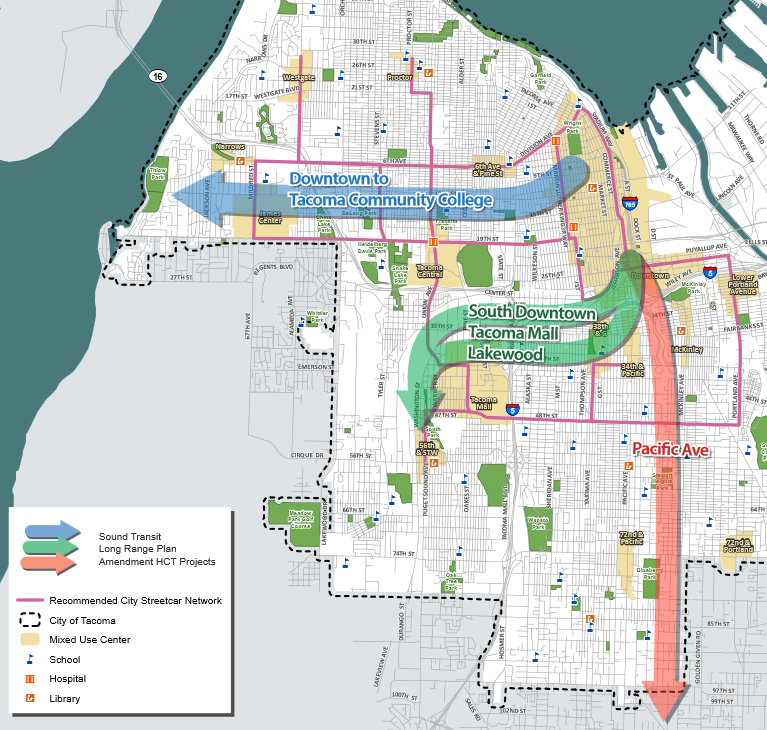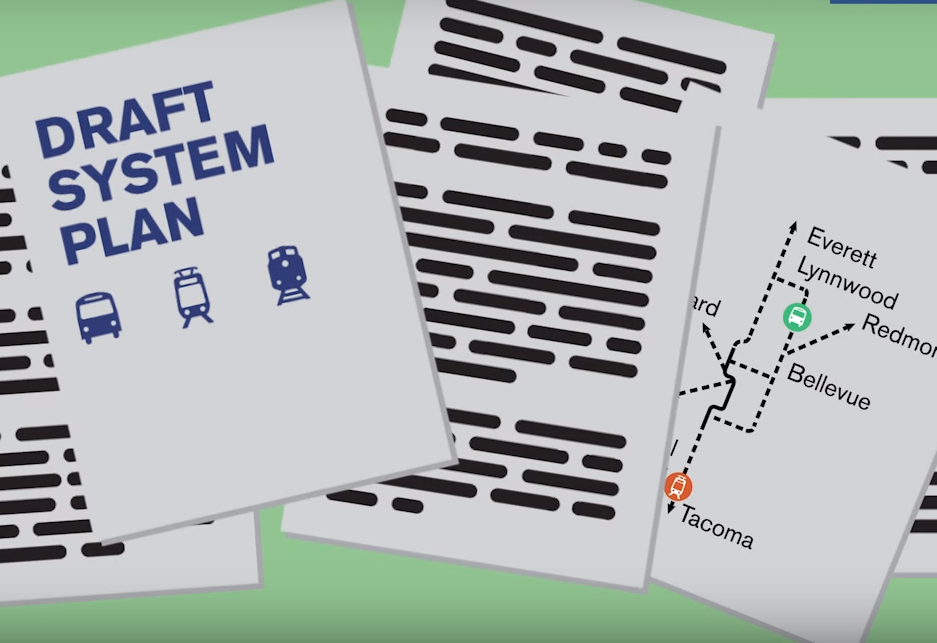
On January 21st, Tacoma Mayor Marilyn Strickland outlined to Sound Transit Board Chair Dow Constantine what Tacoma’s top 3 project priorities are for Sound Transit 3.
Mayor Strickland’s ST3 priorities:
- Extending regional light rail from Kent-Des Moines Road to Federal Way and Tacoma Dome via I-5;
- Extending Tacoma Link to Tacoma Community College; and
- More frequent Sounder service.
The Mayor appears to be making an argument for Tacoma’s ST3 projects based on a general request for geographic and social equity in regional transit investments. She goes on to urge Sound Transit to recognize that Tacoma is planning for growth in the year 2040 at a scale that no other city in the South Sound is making preparations for. These are valid arguments based in regional growth management policy and Sound Transit precedent relating to subarea equity.
Tacoma Mall Light Rail dropped
That being said, it seems that the Mayor has already given up on connecting Tacoma’s two regional growth centers with regional light rail, despite the fact that ridership is cost effective relative to other portions of Central Link and that Tacoma’s Transportation Commission has been in favor of exploring ways to connect the two centers. Why drop this project so soon? Also missing from this list of priorities is Pierce Transit’s bus rapid transit capital contribution on Route 1, or any mention of an operating contribution to enhance transit service to build ridership on planned extensions of light rail. Even the City’s request for “more frequent Sounder service” seems like it could have been a little more connected with the needs of Tacoma’s transit riders by giving a little more direction to Sound Transit staff, perhaps centering around the need for limited stop or express trains between Tacoma and Seattle.
It is perplexing to advocates that while Tacoma has adopted a Transportation Master Plan with identified high capacity transit corridors, that Tacoma would not advocate for those projects as a matter of official policy. It is also confusing that given the transit needs of Tacoma relative to existing service levels, and the opportunity for resources that would be available in a 25-year ST3 ballot measure for Pierce County, that we are not asking for more. Additionally, this brief list of projects, while serving Tacoma in the mid-2030’s does not adequately serve the needs of the population in 2020 or 2025.
Why is Tacoma not asking for more?
Tacoma should be requesting more projects instead of fewer and projects that we know we can deliver on in shorter order than light rail to Seatac Airport. There should be a local transit service contribution in here to enable greater access to Tacoma Dome Station, which is nearing its peak parking capacity. There should also be provision for studying a second extension of Tacoma Link in ST3 from Hilltop to the Lincoln District and Tacoma Mall to connect Tacoma’s regional growth centers. There should also be a request for Bus Rapid Transit on Pacific Avenue, which is a project Pierce Transit is already accumulating grant funding for and is in both the Transportation Master Plan that Council just adopted several months ago as well as Transportation 2040 at the PSRC.
Study 6th Avenue alongside 19th St for TCC Light Rail
Instead the Mayor felt that it was important to critique staff’s analysis regarding the costs for extending Tacoma Link to Tacoma CC and for not recognizing as much “TOD potential” along the identified corridor. Sound Transit should give Tacoma Link to TCC another look, but this time it would be a good idea to evaluate 6th Avenue as a corridor alongside 19th St with the same metrics and methodology. This was not done for the initial ST3 project analysis and represents a significant oversight by staff that does not reflect the desires of the Tacoma community and does not adequately respect the transportation element of Tacoma’s comprehensive plan or the Puget Sound Regional Council’s Transportation 2040 plan, which currently identifies 6th Avenue as the corridor for light rail to TCC.
Include more Stakeholders for ST3 final ask
The City of Seattle’s letter to Sound Transit included input and signatures from their entire City Council. It is seven pages long, compared with Tacoma’s two pages. They went into significant detail about project timing, phasing, scale, priorities, contingencies, corridors, and infill stations. It would behoove future letters of this nature to include input from more stakeholders, such as other City Council members, especially those serving on the Infrastructure, Planning, and Sustainability subcommittee, as well as the Transportation Commission to arrive at a fleshed out final ask for the ST3 ballot measure. This once in a lifetime decision is too important to leave to chance. Let’s make sure we get it right.
This is a cross-post and originally appeared on Tacoma Transit.
Chris Karnes a native of Tacoma and well known local writer behind the Tacoma Transit blog.


